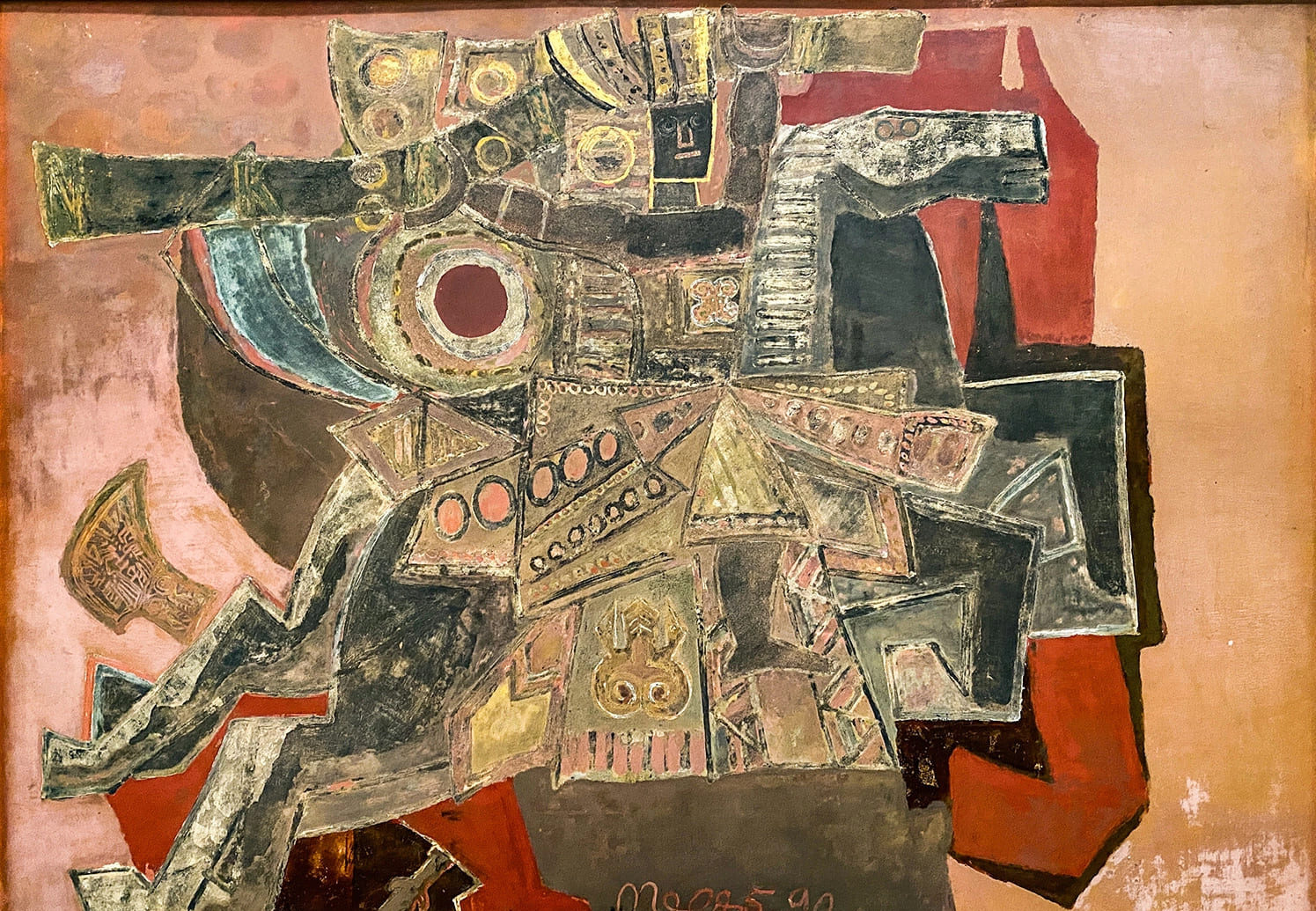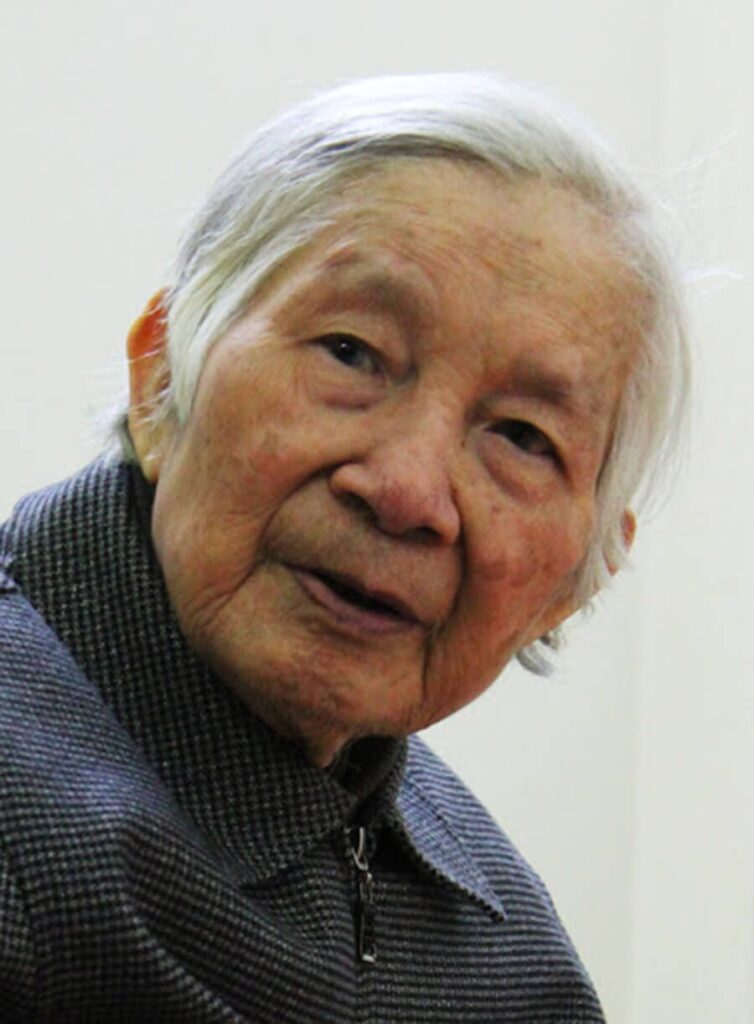Nguyễn Tư Nghiêm: A Titan of Modern Vietnamese Art
Nguyễn Tư Nghiêm (1922–2016) stands as one of the most influential figures in modern Vietnamese art, celebrated for his unique ability to weave Vietnam’s folk traditions into contemporary masterpieces. As a key member of the “Fantastic Four” alongside Nguyễn Gia Trí, Tô Ngọc Vân, and Trần Văn Cẩn, he left an indelible mark on the nation’s artistic landscape. His works, deeply rooted in cultural heritage, continue to captivate audiences in Vietnam art galleries. This article delves into his biography, artistic journey, and the enduring legacy of his contributions to Vietnamese fine arts.
Biography of Nguyễn Tư Nghiêm: From Rural Roots to Artistic Mastery
Nguyễn Tư Nghiêm was born on October 22, 1922, in Nam Đàn, Nghệ An province, a region rich in Vietnamese cultural traditions. Growing up in a modest family, he was exposed early to folk art forms like Đông Hồ woodblock prints and traditional performances, which profoundly shaped his artistic vision. His childhood in rural Vietnam instilled a deep appreciation for the nation’s cultural and spiritual heritage, which later became central to his work.
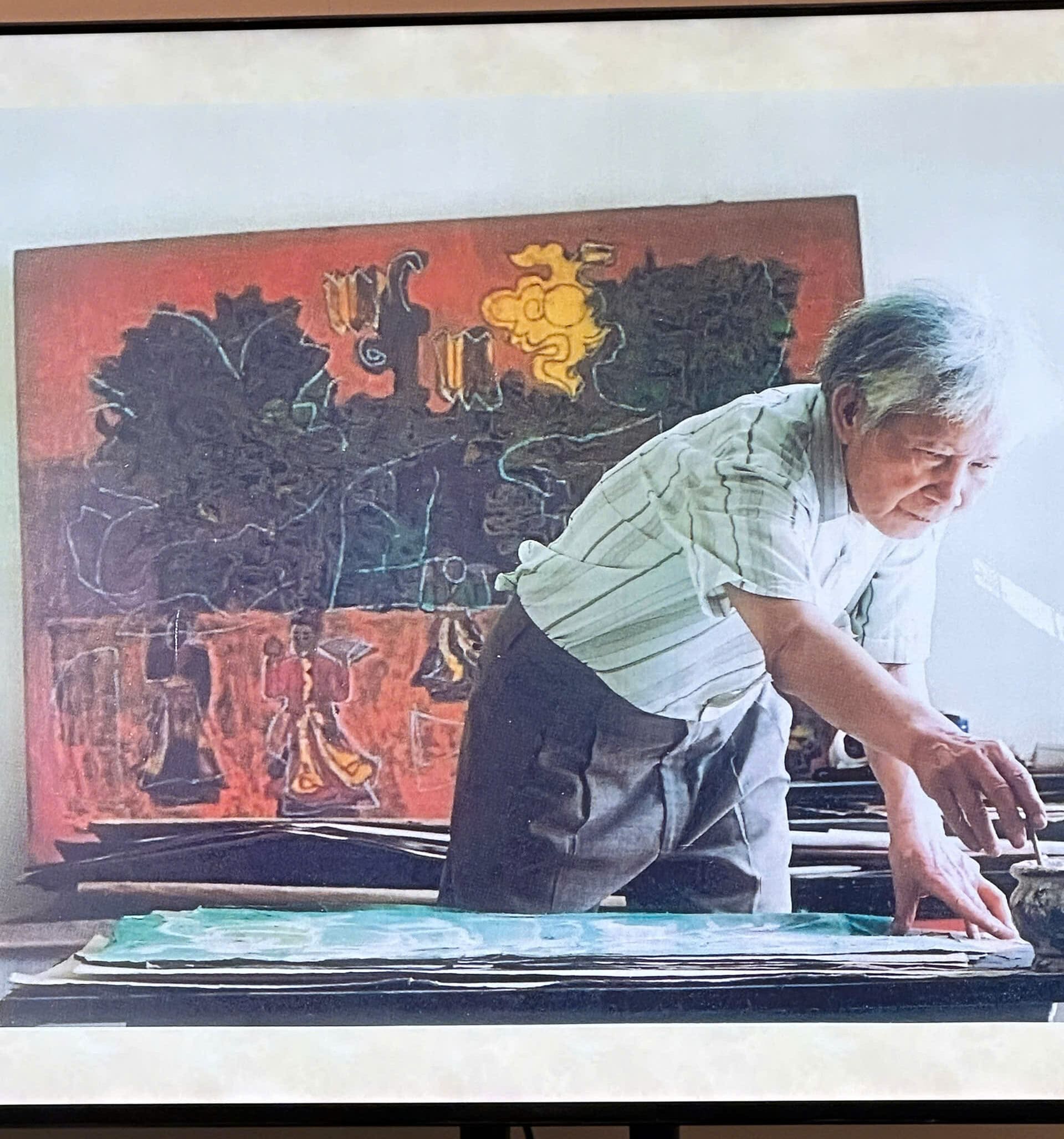
In 1941, Nguyễn Tư Nghiêm enrolled in the Indochina School of Fine Arts (now Vietnam University of Fine Arts) for the 1941–1946 course, studying alongside peers like Bùi Xuân Phái and under mentors like Tô Ngọc Vân. The Japanese occupation in 1945 disrupted his studies, preventing an official graduation, but his training in Western techniques and exposure to Vietnamese traditions laid a strong foundation for his career.
After the 1945 August Revolution, Nguyễn Tư Nghiêm joined the resistance against French colonialism, contributing propaganda art and illustrations. He later returned to Hanoi, where he faced financial hardships but remained dedicated to his craft. His life was marked by resilience, as he balanced artistic creation with teaching and cultural preservation. He passed away on June 16, 2016, in Hanoi at age 93, leaving behind a monumental legacy.
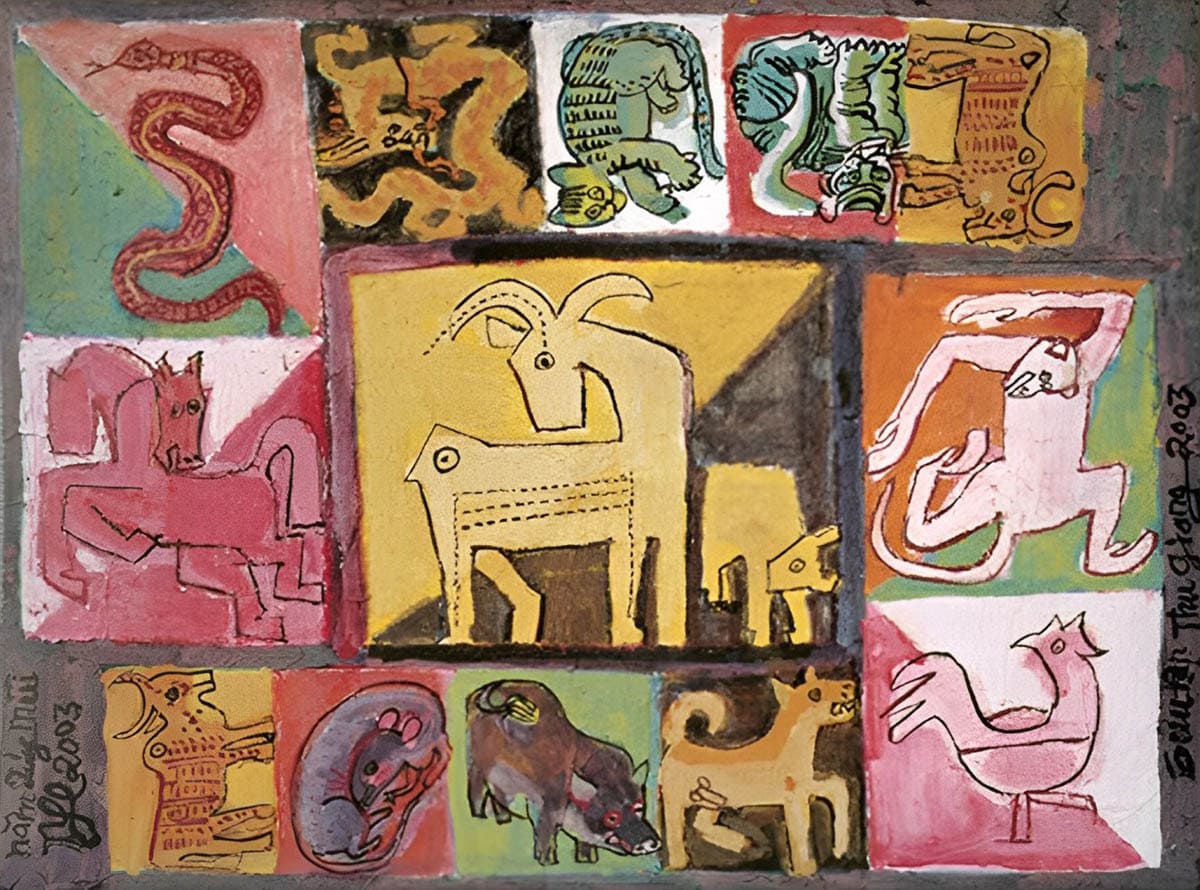
Artistic Journey of Nguyễn Tư Nghiêm: Blending Folk and Modern Art
A Career Defined by Innovation
Nguyễn Tư Nghiêm’s career spanned over six decades, characterized by a relentless pursuit of innovation and a deep connection to Vietnamese culture. After his studies, he quickly gained recognition for his ability to fuse Western painting techniques with the symbolic and decorative elements of Vietnamese folk art. His works often drew inspiration from Đông Hồ prints, ancient sculptures, and traditional performances like chèo opera and water puppetry.
In the 1950s, Nguyễn Tư Nghiêm taught at the Vietnam Fine Arts School, mentoring young artists while continuing to create. Despite political challenges, including the Nhân Văn – Giai Phẩm movement (1956–1957), which led to restrictions on his public exhibitions, he persevered, producing works that resonated with both national pride and universal appeal. His first solo exhibition in 1960 marked a turning point, showcasing his mastery of oil and lacquer painting.
Nguyễn Tư Nghiêm’s later years saw him exploring abstract and symbolic forms, particularly in his series inspired by the Vietnamese zodiac and ancient myths. His ability to modernize traditional motifs while retaining their cultural essence earned him international acclaim, with exhibitions in France, Japan, and the United States.
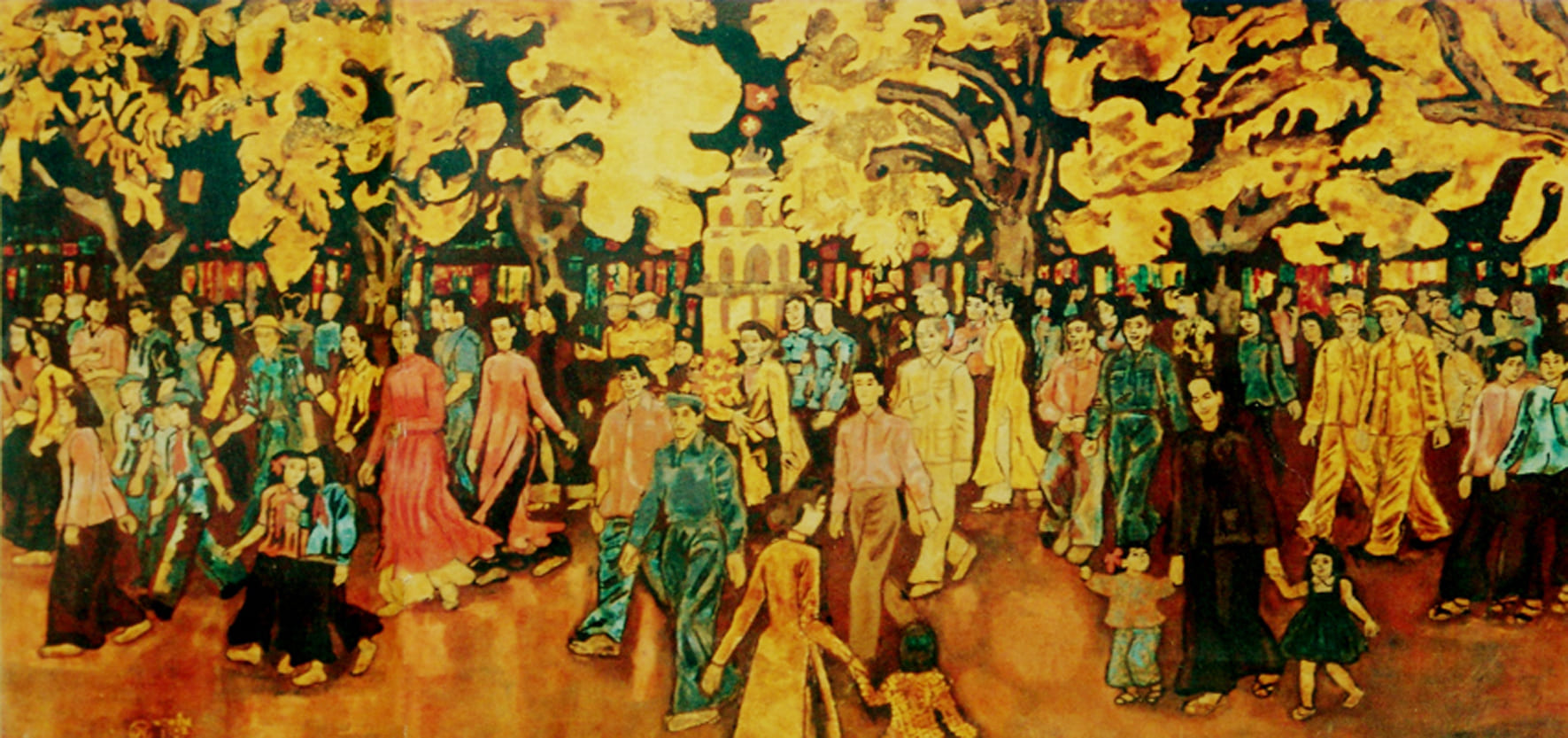
Key Milestones in Nguyễn Tư Nghiêm’s Career
- 1941–1946: Studied at the Indochina School of Fine Arts, shaping his unique style.
- 1950s: Taught at the Vietnam Fine Arts School and created iconic folk-inspired works.
- 1960: Held his first solo exhibition, cementing his reputation.
- 1990s–2000s: Gained international recognition through exhibitions in Europe and Asia.
- 2016: Passed away, leaving a lasting legacy in Vietnamese art.
Notable Works of Nguyễn Tư Nghiêm: A Celebration of Vietnamese Culture
What Are Nguyễn Tư Nghiêm’s Iconic Works?
Nguyễn Tư Nghiêm’s works are renowned for their vibrant colors, bold compositions, and deep ties to Vietnamese folk traditions. His paintings, often in oil and lacquer, capture the spirit of rural life, mythology, and cultural rituals. Below are some of his most celebrated pieces:
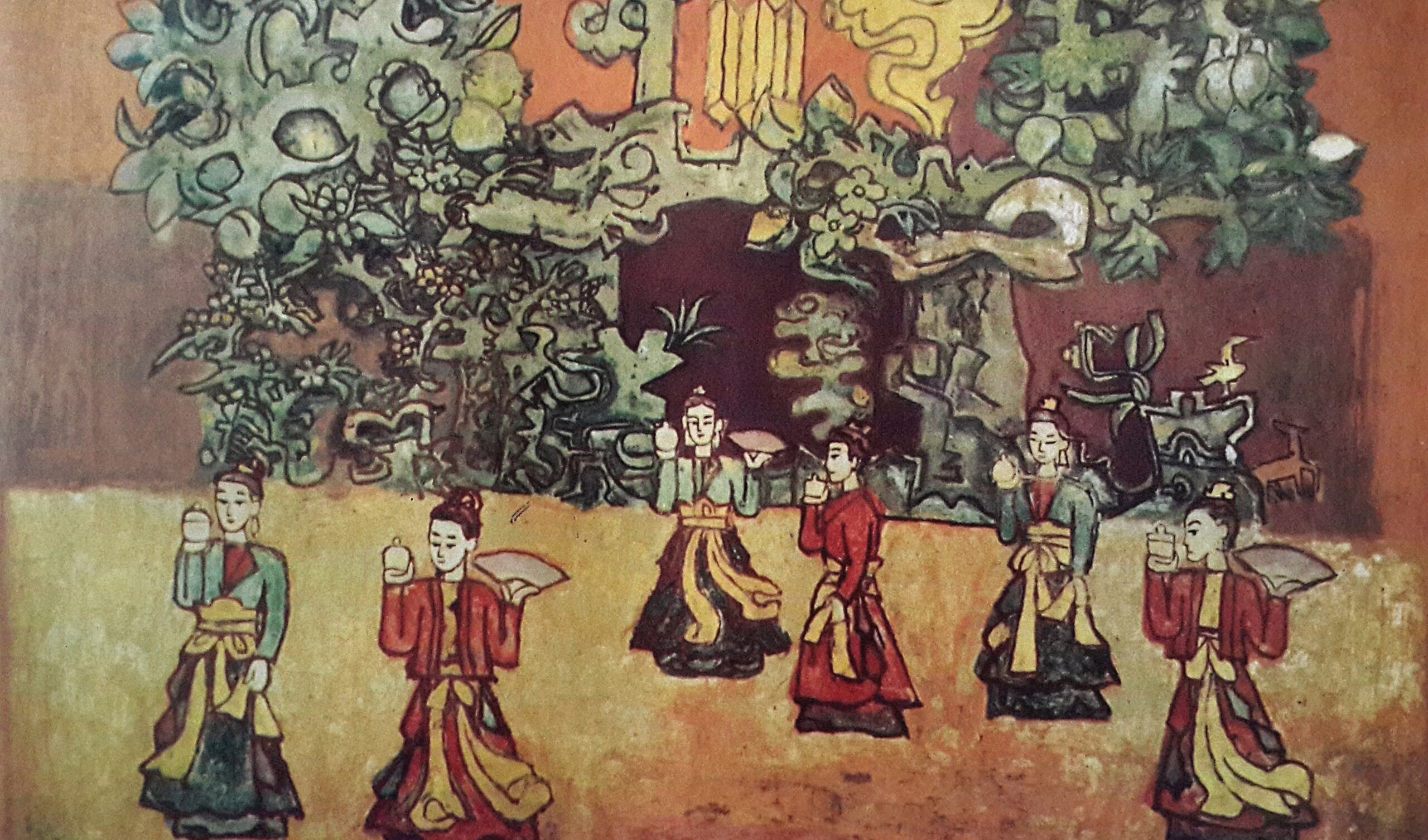
- Điệu Múa Cổ (1956): A vibrant oil painting depicting traditional Vietnamese dance, blending folk motifs with modern dynamism. It is preserved at the Vietnam Fine Arts Museum.
- Con Nghê (1960): Inspired by the mythical nghê (Vietnamese lion-dog), this lacquer work showcases bold lines and vivid colors, symbolizing cultural strength.
- 12 Con Giáp (1984–2004): A series of paintings based on the Vietnamese zodiac, each animal rendered with symbolic and abstract elements, displayed at major museums.
- Gái Dệt Vải (1958): Portrays a woman weaving, reflecting rural life with intricate patterns inspired by Đông Hồ prints.
- Thánh Gióng (1970): Depicts the legendary Vietnamese hero Gióng, combining mythological storytelling with modern aesthetics.
- Múa Rồng (1980): A dynamic portrayal of the dragon dance, capturing the energy and spirituality of Vietnamese festivals.
These works are celebrated for their ability to bridge tradition and modernity, with many displayed at the Vietnam Fine Arts Museum and fetching high prices at international auctions.
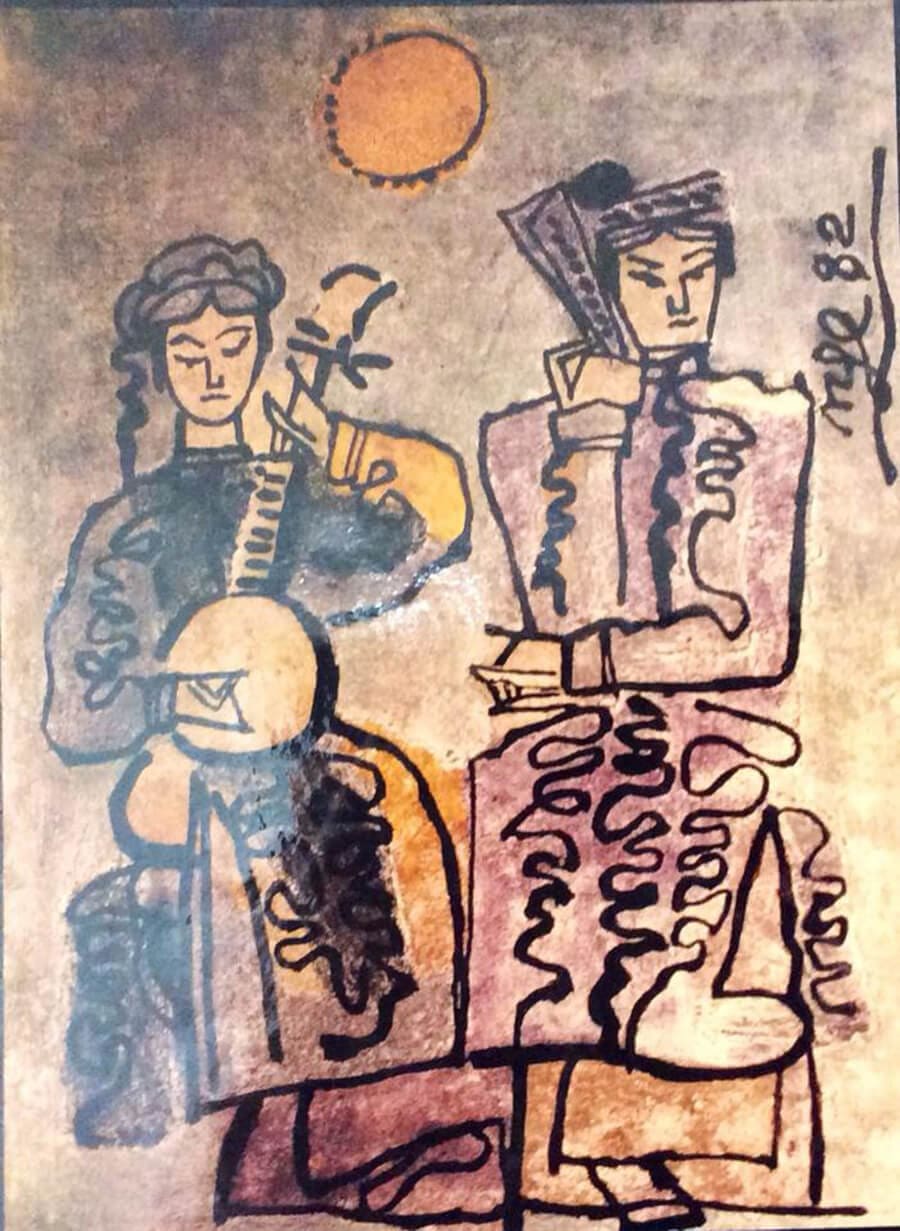
Why Are Nguyễn Tư Nghiêm’s Works Revered?
Nguyễn Tư Nghiêm’s paintings are cherished for their cultural depth and artistic innovation. His use of vibrant colors, rhythmic compositions, and folk-inspired motifs creates a unique visual language that resonates globally. Works like 12 Con Giáp and Thánh Gióng are not only artistic masterpieces but also cultural treasures, preserving Vietnam’s heritage for future generations.
Legacy and Influence of Nguyễn Tư Nghiêm on Vietnamese Art
How Did Nguyễn Tư Nghiêm Shape Vietnamese Art?
Nguyễn Tư Nghiêm’s legacy is inseparable from the evolution of modern Vietnamese art. As a pioneer, he transformed folk art into a contemporary medium, blending traditional motifs with modern techniques. His influence extended beyond his paintings, as he mentored countless artists during his teaching career, encouraging them to explore Vietnam’s cultural identity.
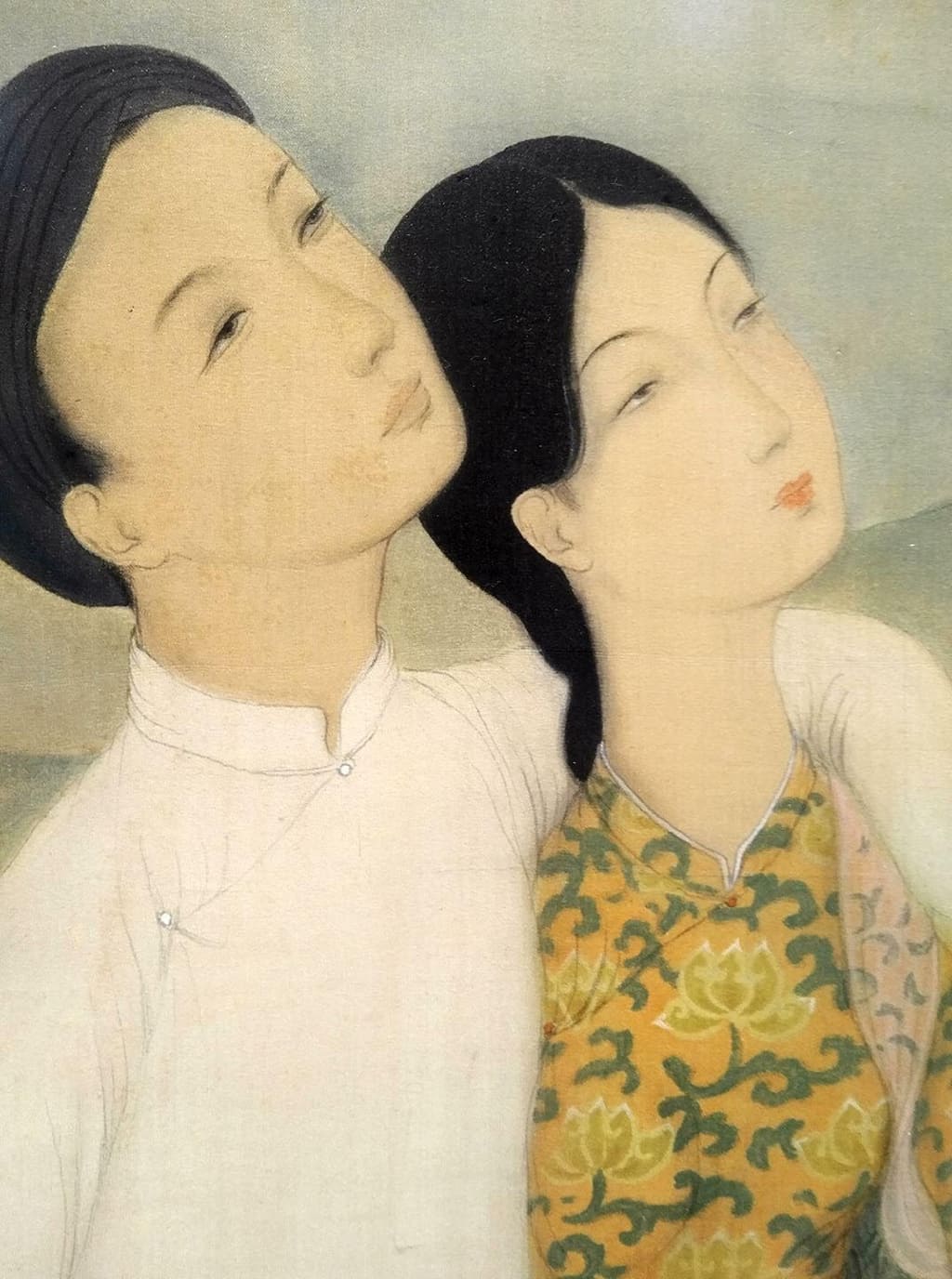
His works preserve the essence of Vietnamese village life, mythology, and rituals, serving as a bridge between past and present. In 1990, he was awarded the Hồ Chí Minh Prize for Literature and Arts, recognizing his monumental contributions. Exhibitions in 2012 and 2016, marking his 90th and 94th birthdays, further cemented his enduring impact.
Influence on Future Generations
Nguyễn Tư Nghiêm’s innovative approach inspired modern artists to explore Vietnam’s cultural roots. His techniques, particularly in lacquer and oil, remain a cornerstone of art education in Vietnam. His ability to modernize folk art while preserving its soul has influenced contemporary painters and continues to shape the nation’s artistic identity.
In conclusion, Nguyễn Tư Nghiêm is a towering figure in Vietnamese fine arts, whose works capture the heart of the nation’s culture. If you’re passionate about Vietnamese art, visit the Vietnam Fine Arts Museum to experience his masterpieces firsthand. His legacy will continue to inspire generations of art lovers.
